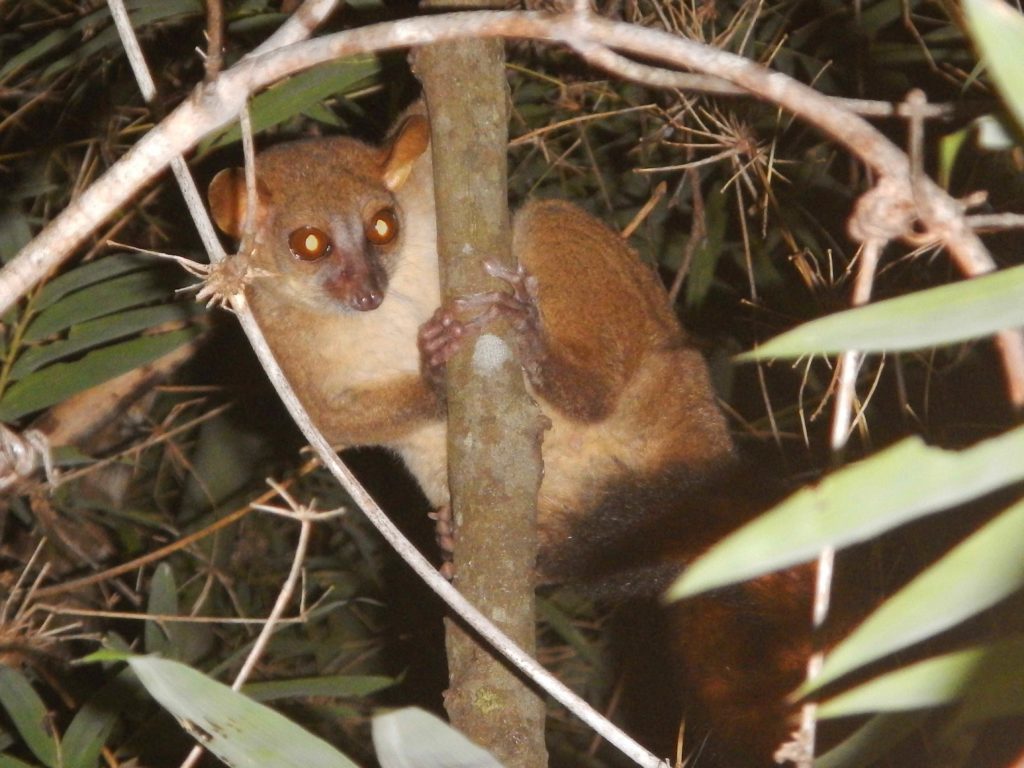Northern Giant Mouse Lemur (Mirza zaza)
This little known species of lemur inhabits the dry forests of the Sambriano region and has also been recorded in secondary forests and old banana plantations. The northern giant mouse lemur is considered gregarious, sleeping in groups of 2 to 8 animals which can include several adult males (Kappeler et al. 2005, Rode 2010).

This nocturnal lemur was actually only discovered in 2005 and unlike other lemur species, can reproduce throughout the year. It is believed that this is made possible through feeding on sugary secretions of the larvae of plant hoppers in the dry season. These lemurs are also considered to have highly promiscuous reproductive behaviour and has the largest testes to body ratio of all primates.
The dry forests that this species inhabit are one of the fastest declining habitats on Madagascar with a 40% decrease in forest cover in the past 40 years. This decrease is mainly due to forest clearance and slash and burn agricultural activities.
The northern giant mouse lemur is currently classed as Endangered by the International Union for the Conservation of Nature (IUCN) Red Data List.


